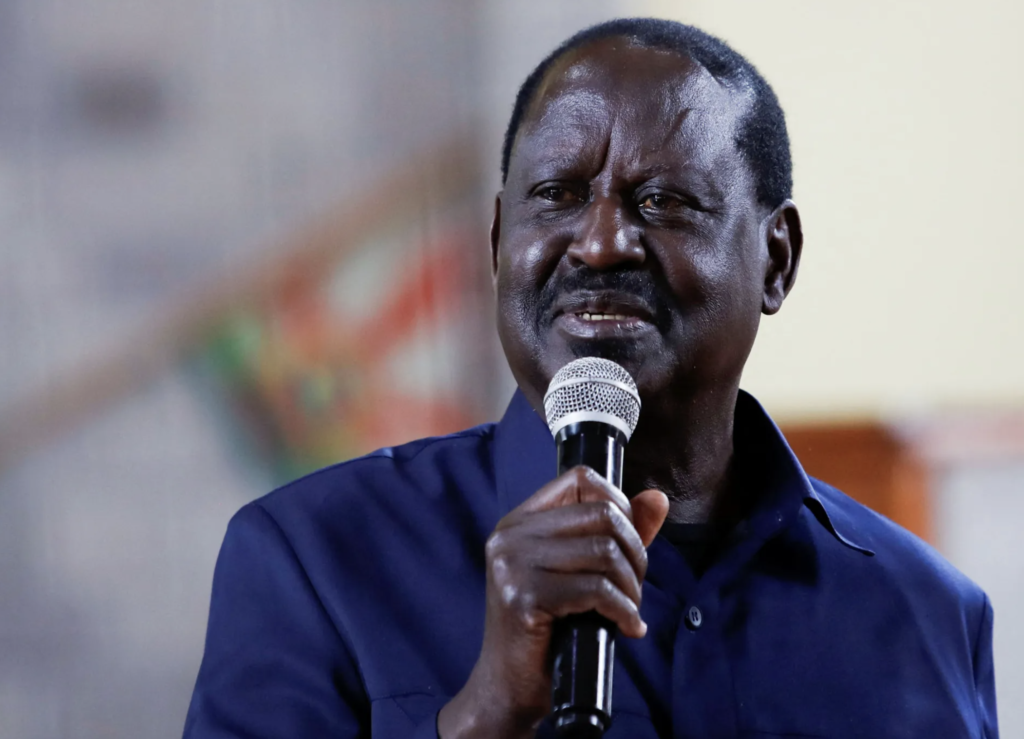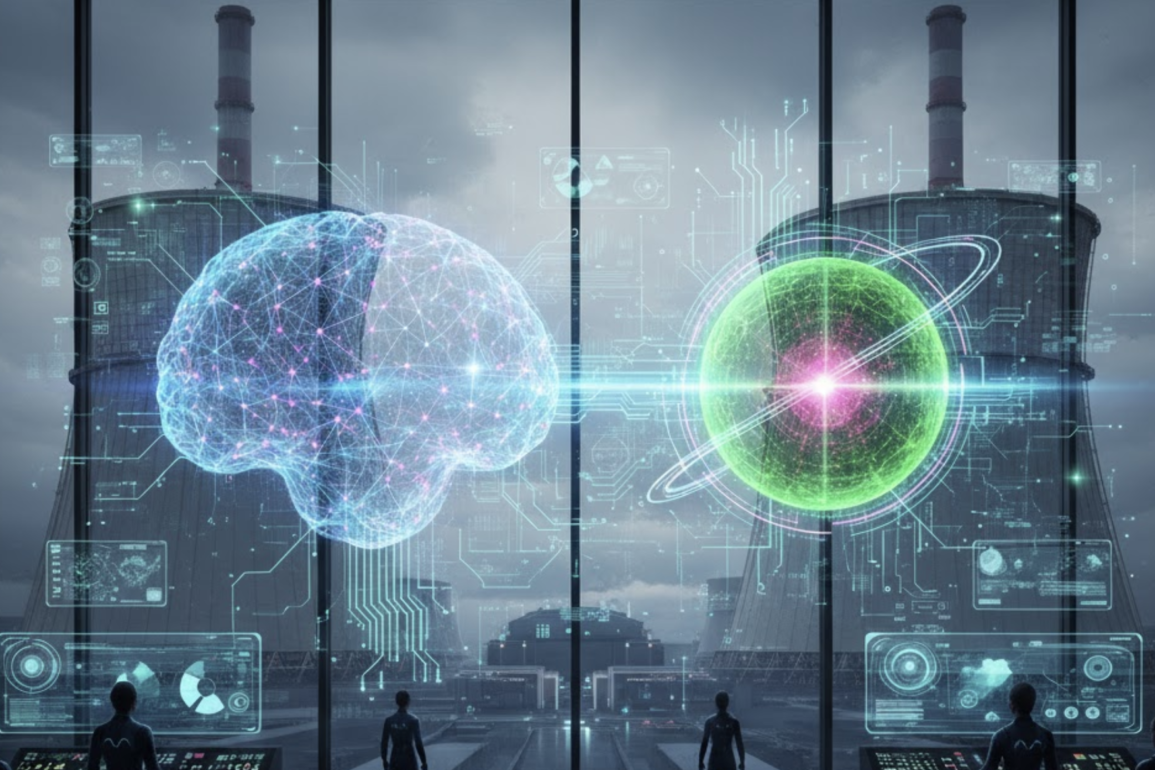When Raila Odinga rose through Kenya’s fractious politics, jostling as a perennial presidential candidate, opposition firebrand, coalition negotiator, he rarely sounded like a futurist. His appeals were often grounded in familiar tropes of inclusion, transparency, and redistribution.
Yet in recent years, Odinga, who passed away in India while undergoing treatment on October 15, surprised many by embracing two polarizing pillars of 21st-century transformation: artificial intelligence and nuclear power.
His support for these technologies may have seemed audacious, or even risky, from a politician known more for grassroots mobilization than technocratic zeal. But Odinga’s pronouncements reveal a deeper, long-term wager: that Kenya can escape the trap of middle-income stagnation only by leaping ahead technologically, rather than mirroring incremental progress elsewhere.
“Today we have this technology called the AI and it is helping people create a lot of wealth… if we can impart the A.I skills to our youth they will be on high demand around the world. This is what is going to help us leapfrog or catch up with other countries which are ahead of us,” the former Prime Minister told graduates at Siaya Community Digital Hub last May.
It was an unusual message, not so much for its ambition but for its confidence. In that ceremony, he also warned of Africa’s “youth implosion,” noting that 75 percent of the continent’s population is under 35. Without skills, he said, the young risk becoming “delinquent, drug addicts and a bother to the society.” With skills, they become engines of development.
His logic was simple: invest heavily now in AI education and energy scale, and Kenya could sidestep the slow trudge of industrialization that many African nations found themselves stuck in.
A Political Life Steeped in Pragmatism
To understand why his techno-leaning remarks resonated, one must place them in the arc of Odinga’s career. The son of Jaramogi Oginga Odinga—Kenya’s first vice president and a veteran of the independence struggle, Raila was steeped in a tradition of left-leaning populism. Over decades, he became synonymous with opposition resistance: from protests in the 1990s, to the post-election violence of 2007, to repeated presidential bids.

Yet even amidst protest politics, Odinga also held executive posts: he served as Energy Minister in the early 2000s and later as Prime Minister (in Kenya’s brief power-sharing government). In those roles, he gained exposure to infrastructure planning, regulation, and the levers of governance. It is telling that his technology interventions came after his time in formal power—but rested on the credibility he earned by years of contestation.
In June 2025, his push for nuclear energy gained fresh traction. At a stakeholders’ forum in Siaya county, Odinga participated in discussions on Kenya’s nuclear ambitions. The Energy Ministry outlined potential reactor sites, and the Kenya Nuclear Regulatory Authority (KNRA) presented technical frameworks. Siaya had been identified as a candidate location. Locals and policymakers were invited to engage and raise concerns.
Odinga himself urged the government to commit to peaceful nuclear power, reminding skeptics that he once proposed it during his tenure as Energy Minister:
“When I was minister for energy, I proposed the introduction of nuclear power to solve our energy problems but some people were only thinking of nuclear bombs. There is something called peaceful use of nuclear energy,” he said.
He went further: a nuclear plant capable of producing 5 megawatts (MW) to the national grid, he claimed, would not only resolve chronic power deficits but lower manufacturing costs, attract investment, and give Kenya a competitive edge.
The government has announced plans to build the country’s first nuclear power plant in his home county of Siaya by 2030. The Kshs 500 billion mega-project, to be developed near Lake Victoria, aims to boost national energy output to 60,000 megawatts—up from the current 3,400 megawatts—as part of Kenya’s industrialisation agenda.
The proposed nuclear power station will not be about “bombs or weapons,” officials said, but about safe, modern, civilian-use energy generation to support Kenya’s growing electricity demands. The plant would integrate seamlessly into the national grid, ensuring more reliable and affordable power for homes, industries, and businesses.
Leapfrogging or Overreach?
Kenya, like many nations in Sub-Saharan Africa, has long contended with power shortages, load shedding, and high energy costs. The government has stepped into renewable energy such as solar, wind and geothermal with notable success. Still, a high-capacity baseload source like nuclear is appealing in theory.
Yet it is also fraught: reactors demand massive capital, regulatory rigor, cooling infrastructure (often near large water bodies), and institutional trust. In Kenya, proposed reactor sites have included Kwale, Kilifi, and Siaya; resistance, especially in Kilifi, has prompted the government to increase outreach efforts in Nyanza, where local leadership has shown more openness.
Was Odinga’s nuclear push a technocratic gambit or political theater? Given that he never held the presidency, his influence over policy was always indirect. But in the later years of his life, particularly after his opposition party (ODM) entered a policy pact with the ruling government, his capacity to shape priorities grew.
In that context, championing AI and nuclear served dual purposes: signaling relevance in a changing world and framing the debate beyond parochial politics. His emphasis on youth and innovation offered a narrative for post-election Kenya: not just who rules, but how Kenya competes on the global stage.
The AI Bet: Skills, Employment, Sovereignty
Odinga’s call for broad AI skills among youth was not rhetorical flourish. It aligned with global and continental anxieties about automation, job displacement, and digital inequality. In Kenya, where youth unemployment hovers in double digits, equipping a generation with AI capabilities is as much economic survival as political vision.
He reminded his audience of history: “In 1963 Kenyan and Korean economies were at par in all parameters,” he said. Today, South Korea’s economy is forty times larger than Kenya’s, he argued, because it invested in its youth and infrastructure in ways that attracted global capital.
He urged Kenya to mimic the trajectories of India and China, nations that not only trained people but also built ecosystems that drew investors. Within 50 years, China had lifted 500 million people from poverty to middle class, he said. Africa could do the same, with a pipeline of skilled youth and improved infrastructure.
At the Siaya hub graduation, which produced 200 graduates, Odinga praised those absorbed into the hub’s Business Outsourcing Center, offering them both local and international opportunity.
He juxtaposed skills with social risk: without them, youth become alienated; with them, motivated. In his view, AI was not an elite plaything but a mass pathway to dignity and opportunity.
The Dangers of the Future He Predicted
His tech-forward messaging, however, came with paradoxes. In September 2025, a deepfake video circulated of Odinga endorsing a cryptocurrency project. The video, posted from his verified X (formerly Twitter) account, declared, “Kenya is stepping up to lead Africa into the crypto revolution, embracing digital finance…” But the post turned out to be fraudulent and his account had been compromised.
That incident illustrated the darker underbelly of AI-driven media: the same tools that Odinga believed could empower youth could also manipulate truth. The irony was not lost: the figure who urged Kenya to master AI became a victim of AI misuse.
In Kenya, regulatory and legal frameworks have not kept pace. The Computer Misuse and Cybercrimes Act addresses misinformation broadly, but does not explicitly target AI-generated content. Deepfakes, experts warn, threaten democracy by undermining trust in leaders and institutions.
For a political figure whose legitimacy depended on mass mobilization, this vulnerability was more than symbolic, it exposed the fragility of digital identity in modern politics.
Legacy, Hope, and the Roads Not Taken
With Odinga’s passing at the age 80, many reflect on how his life shaped Kenya’s democratic and political trajectory.
But his tech-era interventions may endure as some of the more surprising kernel ideas in his legacy.
He wasn’t merely posturing; his proposals pointed to an alternative route for Kenya’s next phase: one not anchored in personality politics or rent-seeking, but in scalable infrastructure and knowledge systems. In that sense, he stands alongside a rare breed of African leaders who believed that progress demanded not just political reform but technological audacity.
Will Kenya embrace AI skills at scale? Will it dare nuclear investment? The policy state remains cautious. But Odinga’s bold voice on those fronts has given Kenya both a framing and a challenge, that the future must be built, not awaited.
If the next generation takes his call seriously, they may find that the bridge to global relevance is not in slogans or alliances but in code, megawatts, and a confidence that Africa need not lag, but leap.




